6 Real Castles Connected To Shakespeare That You Can Actually Visit
By Cassidy Cash, That Shakespeare Girl

1693 “The Prospect of their Ma’ties Castle of Sterling”, engraving by John Slezer. Stirling Castle, Scotland, from the south-east, Showing James VI’s now demolished forework. From Wikimedia Commons, Public Domain. Source
1. Stirling Castle
The plays of Macbeth and A Midsummer Night’s Dream both nod to Stirling Castle. Macbeth was written intentionally to impress James I, and I’ll argue that’s due in no small part to Shakespeare needing to impress upon the monarch his undying loyalty to the King after a scandalous involvement in a rebellion, and the Shakespeare family being named as adjacent contributors to the Gunpowder Plot. As James I was baptised at Stirling Castle, and was descended from the Canmore line which eventually overthrows Macbeth in the end, Stirling Castle is tangentially related to Shakespeare’s Macbeth.
A more direct association with this castle from Shakespeare is A Midsummer Night’s Dream, in which the idea of a baptism at Stirling Castle plays a running joke for the play. There is one famous historical report about the baptism of Prince Henry, which was published in London as a way to advertise the kingly credentials of James VI. The account lists several events that were planned for the baptism, though not all of them were actually performed for a variety of mitigating circumstances. Perhaps the most humorous event, and one reason it makes such good fodder for the play, is the pulling of a chariot by a lion and having it come into the Great Hall. This idea was tossed in the end for fear it might scare people. James I of England being keen on wild animals, housing what amounted to a zoo in the Tower of London including elephants, lions, and polar bears, Shakespeare undoubtedly seized upon the opportunity to include a reference to the lion’s chariot story as a nod to James. Along with the quote from Act III of A Midsummer Night’s Dream, when Iachomo asks “Will not the ladies be afeard of the lion?” the lion appears as a joke in all five acts of Shakespeare’s play.
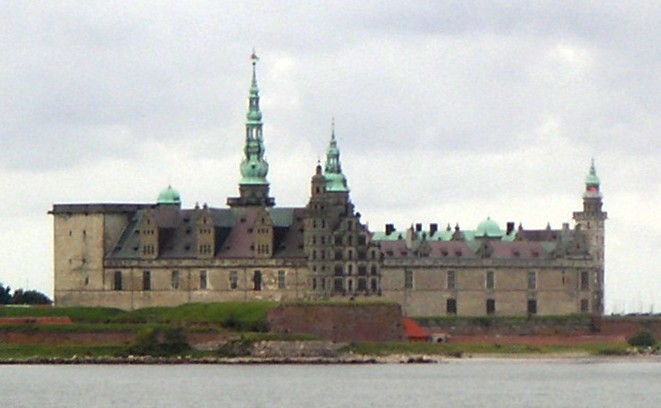
Image of Kronborg Castle, taken from a ferry. Source. Used under Attribution License. Wikimedia Commons
2. Kronborg Castle
Hamlet’s home! Kronborg Castle is the actual castle in Denmark that Shakespeare used as inspiration for his play, Hamlet. While the bard never visited the castle himself (that we know of), he did meet two of Denmark’s nobility, Frederick Rosenkrantz and Knud Gyldenstierne, when they visited London in the 1590s. The play Hamlet, would be first performed soon thereafter, in 1601.Thought to have been based on a legendary Danish prince called Amled, the play’s hero shares the same home at Kronborg. Shakespeare worked his playwriting magic on the name of the castle, as you may remember that in the play itself Hamlet’s home is called Elsinore. Elsinore is the real name of the city where Kronborg Castle is located in Denmark. Many well known Shakespearean actors have come to Kronborg Castle to perform Hamlet, it what is perhaps the ultimate Hamlet destination. Every year the castle even hosts a Hamlet celebration where you can learn the history of the play, and see it performed inside the very castle that inspired Shakespeare so many years ago.

Image by DeFacto, Public Doman, Used by Attribution License
3. Kenilworth Castle
Act IV Scene 9 of Henry VI Part II takes place at Kenilworth Castle, as stated in the stage directions of Shakespeare’s play about England’s history. This scene is where King Henry discovered Cade has fled, his army dispersed, and that York is coming to get him.
You can visit Kenilworth Castle today, and revel in the mighty Shakespeare history there represented. Kenilworth Castle is also the site where Robert Dudley tried to woo Queen Elizabeth into marrying him, by staging a massive festival that included a play which some historians think a young eleven year old William Shakespeare might have witnessed. When you visit, stand in the Great Hall and try to imagine what it would have been like to see a grand play performed for the Queen, or scale the very Tower built by Dudley to woo Elizabeth. Don’t forget to recite King Henry’s lines from Act IV, “Come, wife, let’s in, and learn to govern better, For yet may England curse my wretched reign.”
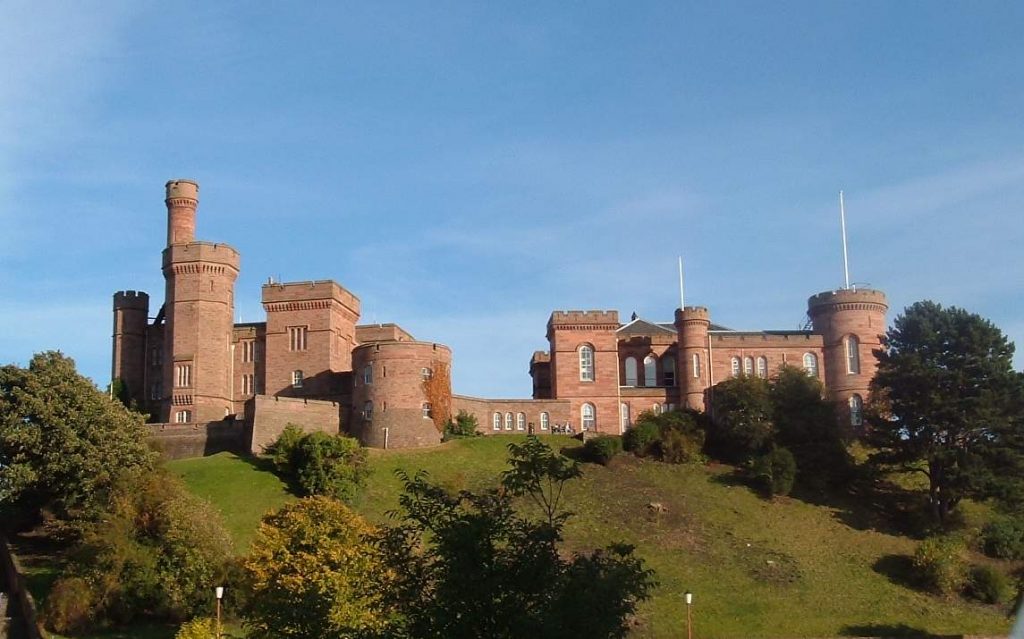 Inverness Castle, Scotland by dave conner [CC BY 2.0 (https://creativecommons.org/licenses/by/2.0)], via Wikimedia Commons
Inverness Castle, Scotland by dave conner [CC BY 2.0 (https://creativecommons.org/licenses/by/2.0)], via Wikimedia Commons
4. Inverness Castle
Allegedly when asked about the connection of Shakespeare, Macbeth, and Cawdor, the 5th Earl of Cawdor exclaimed “I wish the Bard had never written his damned play!” When researching the historical sites connected to Shakespeare’s play, Macbeth, there are actually two castles worthy of mention and places you can actually visit today. The first is the most famous one, Cawdor Castle. There is some controversy surrounding Cawdor Castle’s connection to Macbeth. On the one hand, Macbeth is the Thane of Cawdor, but historians are quick to point out that the play is a highly fictionalized version of the actual Scottish historical figure of King Macbeth (who was, in real life, not a whole lot like the play’s title character). Additionally, the castle never actually features in the play itself. Which brings us to the more direct castle associated with Macbeth: Inverness Castle.
Shakespeare’s Macbeth features King Duncan being killed at the Castle at Inverness. In the play, Duncan declares “This castle hath a pleasant seat; the air nimbly and sweetly recommends itself unto our gentle senses.” (Act I Scene 6). He is talking about the castle at Inverness. Inverness Castle is also where Macbeth descends into madness.
For Shakespeare, Inverness Castle was especially rich with analogy and connection for his audience of James I, because n 1548 Inverness Castle sieged and taken over by two Scottish clans, the Clan Munro and the Clan Fraser (Outlander, anyone?) They supported Mary Queen of Scots, James I/VI’s mother, who had arrived there after fleeing England to find the gates shut against her. The clans felt she was badly treated, and took the castle over on her behalf. She had the governor who had refused her entry hanged, and was thereafter treated favorably. The chief of Clan Munro was later given special favor by her son, James VI.
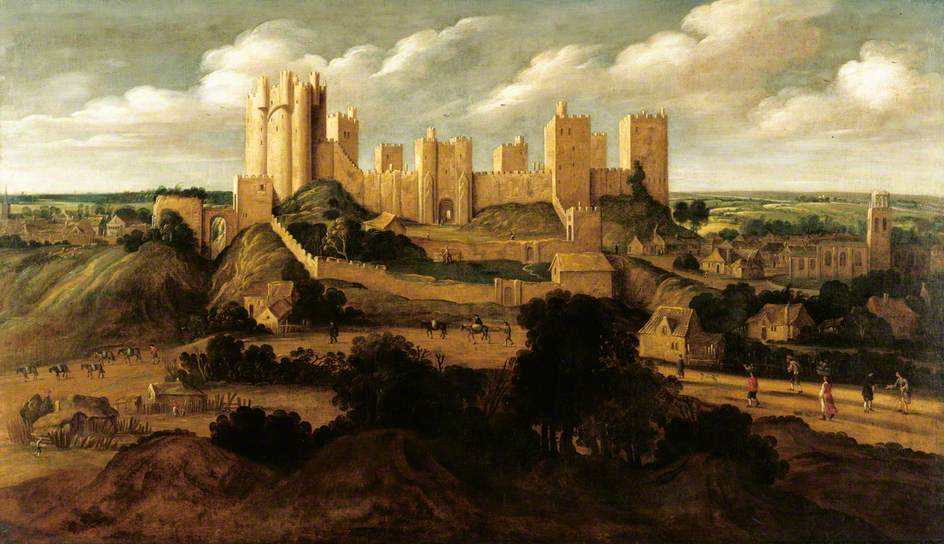
Pontefract Castle, Pontefract, West Yorkshire, England 1640-1641 Alexander Keirincx [Public domain]
5. Pontefract Castle
Known as the most important, and terrifying castle, in the whole of early modern England, Pontefract Castle would be immortalized by Shakespeare in his plays Richard II and Richard III.
In Richard II, the king is sentenced to the castle as a kind of fiercer punishment than the Tower of London, and after arriving to Pontefract Castle is murdered there. (Richard II Act V) Reminded of Richard’s murder in the following play, Richard III, the character Lord Rivers is similarly dragged to Pontefract where he declares:
“O Pomfret, Pomfret! O, thou bloody prison! Fatal and ominous to noble peers! Within the guilty closure of thy walls, Richard the second was here hack’d to death.” (III.3) Charming, right?
Pontefract Castle was a huge and magnificent castle in its’ hey-day. Known for having a bloody prison reputation, the castle was made up of a large network of dungeons. Prisoners who were kept there, lost in the massive maze of tunnels, scraped their names into the stone walls and you can still see them there when you visit today. Pontefract was the site where Richard III condemned Richard Grey, Thomas Vaughn, and the same Earl Rivers who spoke the famous lines about Pontefract in Shakespeare’s play, to death for endangering his reign. The same year they were executed was the year of the alleged “murder” of the two young princes in the Tower of London.
While King Richard II was definitely imprisoned at Pontefract in 1399, historians argue over his exact death. Some think he died of starvation, either self inflicted or intentional neglect. Others believe he was cruelly murdered in the dungeons. Perhaps when you visit, you can scan the walls to see if he left any clues scrawled into the stone.
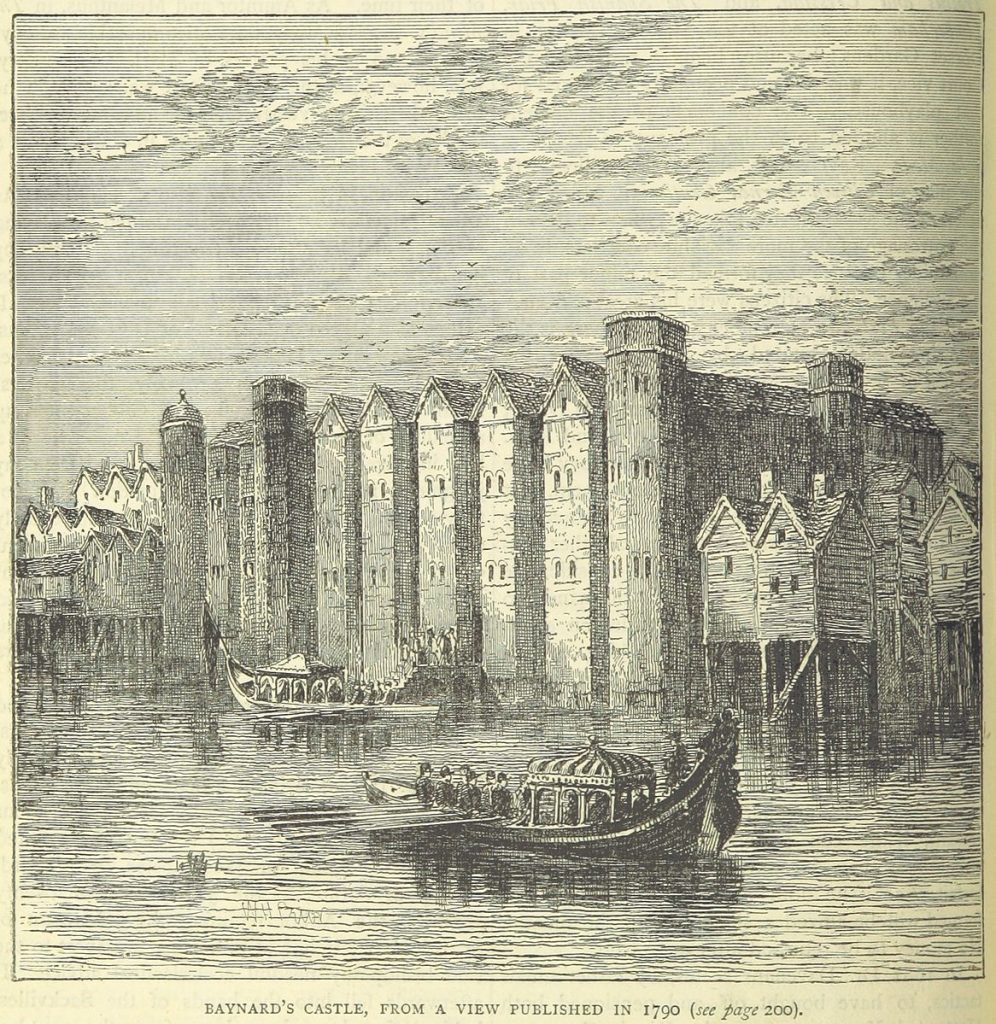
Baynard’s Castle, published 1790s, [Public Domain], via Wikimedia Commons
6. Baynard’s Castle (Tower of London)
Scene VII of Shakespeare’s Richard III takes place at Baynard’s Castle. Likely visible from The Globe in the 17th century, Baynard’s Castle was on the Thames River. After a fire in 1428, Humphrey Duke of Gloucester reclaimed it and rebuilt the castle. After he died, the building was given to Henry VI, who gave it to Richard Duke of York. All of these characters play roles in Shakespeare’s history plays, making Baynard’s Castle a significant location for the bard to tie into his plays. In 1452, the Duke of York was placed under house arrest at Baynard’s Castle, and his agreement to never again rebel against the King was the reason he was allowed to be under house arrest and not beheaded. Richard, Duke of Gloucester, met the Duke of Buckingham here and presented a petition, the episode of which Shakespeare immortalizes in his play, Richard III, when the Duke of Buckingham declares I salute you with this royal title: Long live kind Richard, England’s worthy king!” Once Richard III died in 1485, the castle then belonged to Henry Tudor. The castle itself would burn down, along with The Globe theater, in the Great Fire of London in 1666.
During Elizabeth I’s reign, the castle belonged to the Earl of Pembroke, who entertained the Queen at a dinner and fireworks display there. It would be the descendant of the Earl of Pembroke who would write a dedication to Shakespeare in Shakespeare’s First Folio.
While the original castle is no longer available to visit, and one reason we included this castle last on our list, the site where the castle used to sit can be seen, and is worth the visit, if you know how to find it. There’s a placard marking Baynard’s Castle in London as well as the Castle Baynard’s Street to help you locate the exact spot where this historical monument once stood.
If you would like to learn more Shakespeare history, and download a sketch of Kronborg Castle, featuring the Shakespeare connections to Hamlet, visit That Shakespeare Girl here.
Cassidy Cash is an award winning filmmaker and host of the podcast, That Shakespeare Life. Her work takes you behind the curtain and into the real life of William Shakespeare. Learn more at www.cassidycash.com
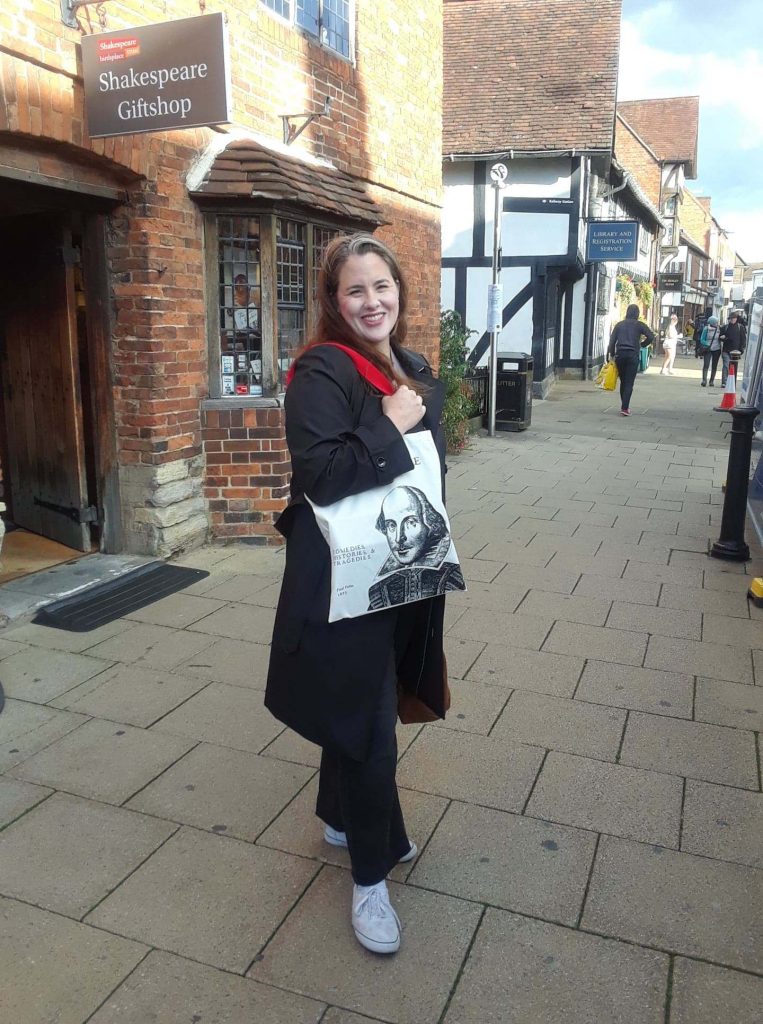
















Latest Comments